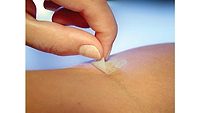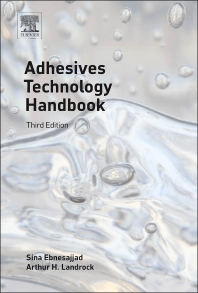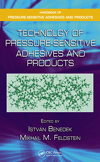ARTIMELT: Soft-Skin Adhesives

Hot melt adhesives from the artimeltlowtrauma series offer a combination of good initial adhesion and painless removal. They boast optimum adhesion and stay put for the intended length of time but can then be removed painlessly without damaging the skin. The adhesives are gentle on the wound and the surrounding skin, ensuring that the wound healing process is not compromised by trauma when changing the dressing or plaster.
The silicone-free hot melts in the artimeltlowtrauma series use a novel thermoplastic acrylate. This offers critical advantages, as acrylates are inherently breathable. The skin under the plaster does not become moist, which has a positive effect on the wound healing process. The wound under the plaster remains moist without the issue of pooling or development of a wet interface, which means that, unlike with silicone-based products, the dressing does not need to be perforated.
The substrate also plays a considerable role in determining the properties of the final adhesive bandage. The good anchoring properties of the adhesive are especially important in enabling removal of the dressing without leaving any residue. Soft, supple and moisture-permeable films or non-woven fabrics are perfectly suited to the combination of positive properties that characterize the artimeltlowtrauma series.
Areas of application include self-adhesive dressings; plasters and tapes for those with sensitive skin, such as newborns or the elderly, and for sensitive skin areas, such as the sacral region or around the eyes; and painless dressing changes and check-ups during the treatment of chronic wounds.
Hot melt adhesives from the artimeltlowtrauma series can be coated onto the substrate using conventional systems for hot melt adhesives. For optimum low-trauma performance, application weights above 100 gsm are recommended. Expert advice should be sought when considering a change of adhesive. The low-trauma products should not be mixed with conventional adhesives (TR, PO or UV acrylates).
These adhesives can be processed using wide-slot nozzles or roller application systems. Additionally, no curing time required, allowing more rapid production and therefore high efficiency. The 100% solvent-free system eliminates the need for solvent recovery and explosion proof equipment, and no drying system required, resulting in a smaller assembly footprint.
Because of their stable properties, artimeltlowtrauma adhesives can still be processed without any problems at least two years from the date of manufacture if stored in their original, well-sealed packaging.
The hot melts in the artimeltlowtrauma series can be processed with release liners that are used for PSA (e.g. siliconized papers or films). In contrast, silicone-based low-trauma adhesives often require special fluorinated release liners.
The artimelt adhesives for direct skin contact are developed and produced in accordance with ISO 13485. The company reports that it places great importance on the use of safe raw materials, in order to enable customers to adhere to Medical Device Regulation EN 2017/745. All artimelt adhesives for direct skin contact are also tested for cytotoxicity in accordance with ISO 10993-5. artimelt also supports its customers in evaluating and testing for skin irritation or sensitization, in accordance with standards such as ISO 10993-10 or ISO 10993-23.
Learn more at www.artimelt.com.
Looking for a reprint of this article?
From high-res PDFs to custom plaques, order your copy today!








